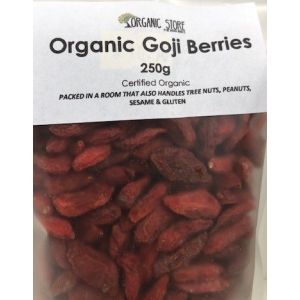Understanding Pinterest Algorithm Changes and How to Adapt
Pinterest has become an essential platform for marketers, creators, and businesses aiming to reach a highly engaged audience. With its unique blend of social media and search engine functionality, Pinterest offers the potential for long-lasting visibility and traffic. However, like all major platforms, Pinterest frequently updates how its algorithm works, impacting how content is discovered and prioritized. Understanding Pinterest algorithm changes is crucial if you want to maintain and grow your presence on the platform.
In this article, we’ll explore the recent Pinterest algorithm changes, what they mean for users and businesses, and how you can adapt your strategy to stay ahead in this ever-evolving landscape.
What Is the Pinterest Algorithm?
Before diving into the recent updates, it’s important to understand what the Pinterest algorithm is and how it functions. Pinterest’s algorithm is a complex system that determines which pins appear in users’ home feeds, search results, and related pins.
Unlike chronological feeds found on some social platforms, Pinterest ranks content based on relevance and quality to individual users. The goal is to show users pins they’re most likely to engage with, based on their interests, searches, and past behavior.
Recent Pinterest Algorithm Changes
Pinterest continuously refines its algorithm to improve user experience, increase engagement, and promote fresh, high-quality content. Some notable Pinterest algorithm changes in recent years include:
1. Prioritizing Fresh Content
Pinterest now favors “fresh” content, which refers to newly created pins rather than repins of existing content. This means creating original pins regularly can increase your visibility compared to relying solely on re-sharing older pins.
2. Enhanced Personalization
The algorithm has become better at tailoring content to individual user interests. It analyzes user activity more deeply to recommend pins, boards, and topics that closely match each person’s preferences.
3. Video Content Boost
Pinterest has started giving more weight to video pins. Video content tends to generate higher engagement, and the platform promotes videos more prominently in home feeds and search results.
4. Emphasis on Close-Up Images
Close-up and clear images are favored over busy or cluttered visuals. This shift encourages creators to use high-quality, focused imagery that grabs attention quickly.
5. Increased Importance of Keywords
Keywords in pin descriptions, board titles, and profiles have become more critical. The algorithm uses this text data to better understand the context and relevance of pins.
How Pinterest Algorithm Changes Affect Your Content Strategy
With these changes, it’s clear that simply pinning random content won’t cut it anymore. To succeed on Pinterest today, you need to adapt your strategy to align with how the algorithm works. Here’s what that means for your content:
- Create original, fresh pins regularly to increase your chances of getting featured.
- Incorporate keywords naturally in your pin titles, descriptions, and board names to improve discoverability.
- Invest in high-quality visuals, focusing on clear, close-up images and engaging videos.
- Personalize content to your audience’s interests by studying analytics and engagement patterns.
- Balance your pinning between your content and repinning relevant content from others to keep your boards active and diverse.
How to Adapt to Pinterest Algorithm Changes
Adapting to Pinterest algorithm changes requires ongoing learning and flexibility. Here are actionable steps to help you stay current and optimize your Pinterest presence:
1. Focus on Consistency and Quality
Posting consistently sends positive signals to Pinterest’s algorithm. Aim for daily pinning, mixing your original pins with repins. But don’t sacrifice quality for quantity; each pin should be visually appealing and provide value.
2. Optimize Keywords Everywhere
Use Pinterest’s search bar to research trending keywords related to your niche. Then, strategically place these keywords in:
- Pin titles and descriptions
- Board titles and descriptions
- Your profile bio
This optimization ensures your pins surface in relevant searches, boosting engagement.
3. Experiment with Video Pins
Given the algorithm’s push for video, experiment with creating short, informative videos or tutorials. Videos catch attention more easily and can drive higher engagement than static images.
4. Analyze Your Pinterest Analytics
Use Pinterest Analytics to monitor which pins, boards, and topics are performing best. Look for patterns in engagement and adjust your content to focus on what resonates most with your audience.
5. Stay Updated on Platform Changes
Pinterest occasionally announces updates and new features. Stay informed by following Pinterest’s official blog, social media channels, and industry news sources. Being an early adopter of new tools or formats can give you an edge.
6. Engage with Your Community
The algorithm also favors accounts that engage actively. Respond to comments, collaborate on group boards, and interact with other users’ pins to boost your account’s authority.
Common Mistakes to Avoid
Adapting to Pinterest algorithm changes also means avoiding strategies that can harm your account’s performance:
- Avoid spammy tactics, such as overusing keywords unnaturally or pinning repetitive content excessively.
- Don’t neglect your profile optimization; incomplete profiles limit your visibility.
- Resist the urge to buy followers or engagement, as this can negatively impact your account credibility.
Conclusion
Pinterest’s algorithm is always evolving, but understanding the core principles behind these Pinterest algorithm changes is key to maintaining and growing your presence. By focusing on fresh, high-quality content, optimizing your keywords, embracing video, and engaging authentically with your audience, you can adapt your strategy to thrive on Pinterest.
Remember, the best approach to Pinterest is a balance of creativity, consistency, and responsiveness to algorithm updates. Start applying these insights today to make Pinterest work harder for you and reach your goal

